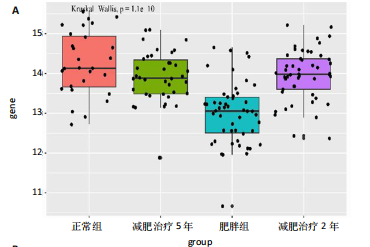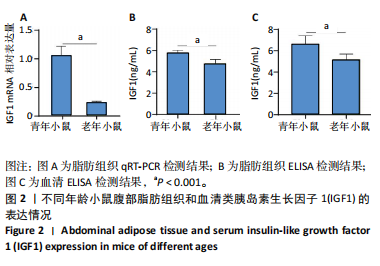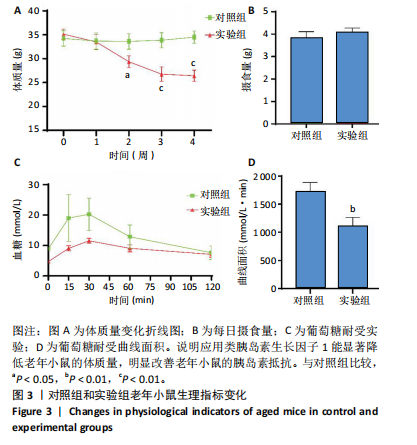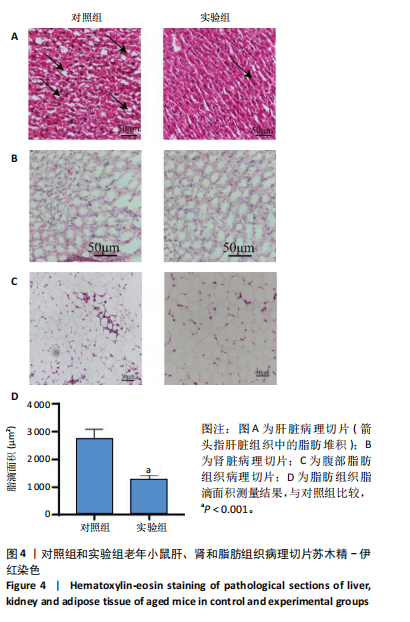[1] LIU C, WONG PY, CHUNG YL, et al. Deciphering the “obesity paradox” in the elderly: A systematic review and meta-analysis of sarcopenic obesity. Obes Rev. 2023;24(2):e13534.
[2] COMPSTON JE, WATTS NB, CHAPURLAT R, et al. Obesity is not protective against fracture in postmenopausal women: GLOW . Am J Med. 2011;124(11):1043-50.
[3] SCOTT D, DALY RM, SANDERS KM, et al. Fall and Fracture Risk in Sarcopenia and Dynapenia With and Without Obesity: the Role of Lifestyle Interventions. Curr Osteoporos Rep. 2015;13(4):235-244.
[4] SHAPSES SA, POP LC, WANG Y. Obesity is a concern for bone health with aging. Nutr Res. 2017;39:1-13.
[5] SCOTT D, SEIBEL M, CUMMING R, et al. Sarcopenic Obesity and Its Temporal Associations With Changes in Bone Mineral Density, Incident Falls, and Fractures in Older Men: The Concord Health and Ageing in Men Project.J Bone Miner Res. 2017;32(3):575-583.
[6] CRUDDEN C, GIRNITA A, GIRNITA L. Targeting the IGF-1R: The Tale of the Tortoise and the Hare. Front Endocrinol (Lausanne). 2015;6:64.
[7] SIMPSON A, PETNGA W, MACAULAY VM, et al. Insulin-Like Growth Factor (IGF) Pathway Targeting in Cancer: Role of the IGF Axis and Opportunities for Future Combination Studies. Target Oncol. 2017; 12(5):571-597.
[8] SCOTLANDI K, PICCI P. Targeting insulin-like growth factor 1 receptor in sarcomas. Curr Opin Oncol. 2008;20(4):419-427.
[9] SINAI-LIVNE T, PASMANIK-CHOR M, COHEN Z, et al. Proteomic analysis of combined IGF1 receptor targeted therapy and chemotherapy identifies signatures associated with survival in breast cancer patients. Oncotarget. 2020;11(17):1515-1530.
[10] WERNER H. The IGF1 Signaling Pathway: From Basic Concepts to Therapeutic Opportunities. Int J Mol Sci. 2023;24(19):14882.
[11] WU Q, HE S, ZHU Y, et al. Antiobesity Effects of Adipose-Derived Stromal/Stem Cells in a Naturally Aged Mouse Model. Obesity (Silver Spring). 2021;29(1):133-142.
[12] CHEN YC, TSAI YJ, WANG CC, et al. Decisive gene strategy on osteoporosis: a comprehensive whole-literature-based approach for conclusive candidate gene targets. Aging (Albany NY). 2022;14(8): 3484-3528.
[13] SOHOULI MH, BANIASADI M, NABAVIZADEH R, et al. Trends in insulin-like growth factor-1 levels after bariatric surgery: a systematic review and meta-analysis. Int J Obes (Lond). 2022;46(5):891-900.
[14] SABZIKARIAN M, MAHMOUDI T, TABAEIAN SP, et al. The common variant of rs6214 in insulin like growth factor 1 (IGF1) gene: a potential protective factor for non-alcoholic fatty liver disease. Arch Physiol Biochem. 2023;129(1):10-15.
[15] CHEN HT, CHUNG YC, CHEN YJ, et al. Effects of Different Types of Exercise on Body Composition, Muscle Strength, and IGF-1 in the Elderly with Sarcopenic Obesity. J Am Geriatr Soc. 2017;65(4):827-832.
[16] REA F, SAVARé L, VALSASSINA V, et al. Adherence to antidiabetic drug therapy and reduction of fatal events in elderly frail patients. Cardiovasc Diabetol. 2023;22(1):53.
[17] MYAKOTNYKH VS. [The diagnosis and treatment of Alzheimer’s disease the representatives of elderly and senile age.]Adv Gerontol. 2019;32(1-2): 112-120.
[18] PTOK U, PAPASSOTIROPOULOS A, MAIER W, et al. Advanced parental age: a risk factor for Alzheimer’s disease or depression in the elderly? Int Psychogeriatr. 2000;12(4):445-451.
[19] PENCINA KM, VALDERRABANO R, WIPPER B, et al. Nicotinamide Adenine Dinucleotide Augmentation in Overweight or Obese Middle-Aged and Older Adults: A Physiologic Study. Clin J Endocrinol Metab. 2023;108(8):1968-1980.
[20] WATERS DL, AGUIRRE L, GURNEY B, et al. Effect of Aerobic or Resistance Exercise, or Both, on Intermuscular and Visceral Fat and Physical and Metabolic Function in Older Adults With Obesity While Dieting.J Gerontol A Biol Sci Med Sci. 2022;77(1):131-139.
[21] KAPLAN A, ZELICHA H, YASKOLKA MEIR A, et al. The effect of a high-polyphenol Mediterranean diet (Green-MED) combined with physical activity on age-related brain atrophy: the Dietary Intervention Randomized Controlled Trial Polyphenols Unprocessed Study (DIRECT PLUS) . Am J Clin Nutr. 2022;115(5):1270-1281.
[22] OSTROWSKA L, GIER D, ZYŚK B. The Influence of Reducing Diets on Changes in Thyroid Parameters in Women Suffering from Obesity and Hashimoto’s Disease. Nutrients. 2021;13(3):862.
[23] BARNER C, PETERSSON M, EDéN ENGSTRöM B, et al. Effects on insulin sensitivity and body composition of combination therapy with GH and IGF1 in GH deficient adults with type 2 diabetes. Eur J Endocrinol. 2012;167(5):697-703.
[24] SAWICKA AK, HARTMANE D, LIPINSKA P, et al. l-Carnitine Supplementation in Older Women. A Pilot Study on Aging Skeletal Muscle Mass and Function. Nutrients. 2018;10(2):255.
[25] KOEGELENBERG AS, SCHUTTE R, SMITH W, et al. Bioavailable IGF-1 and its Relation to the Metabolic Syndrome in a Bi-Ethnic Population of Men and Women. Horm Metab Res. 2016;48(2):130-136.
[26] HERNDON DN, HAWKINS HK, NGUYEN TT, et al. Characterization of growth hormone enhanced donor site healing in patients with large cutaneous burns. Ann Surg. 1995;221(6):649-656; discussion 656-659.
[27] MIHĂESCU GF, OLINESCU RM, GRIGORESCU A. Is IGF-1 involved in the regulatory modifications of cholesterolemia following the administration of embryonary peptides? Rom J Intern Med. 2006; 44(4):443-453.
[28] SHAH K, STUFFLEBAM A, HILTON TN, et al. Diet and exercise interventions reduce intrahepatic fat content and improve insulin sensitivity in obese older adults. Obesity (Silver Spring). 2009;17(12): 2162-2168.
[29] DESPEGHEL M, REICHEL T, ZANDER J, et al. Effects of a 6 Week Low-Dose Combined Resistance and Endurance Training on T Cells and Systemic Inflammation in the Elderly. Cells. 2021;10(4):843.
[30] DORIA P LS, MOSCOVITZ T, TCHERNIAKOVSKY M, et al. Association of IGF-1 CA(n) and IGFBP3 rs2854746 Polymorphisms with Endometrial Polyp Risk. Biomed Res Int. 2018:2018:8704346.
[31] STANLEY TL, FOURMAN LT, ZHENG I, et al. Relationship of IGF-1 and IGF-Binding Proteins to Disease Severity and Glycemia in Nonalcoholic Fatty Liver Disease. J Clin Endocrinol Metab. 2021;106(2):e520-e533.
[32] ARCIDIACONO D, ZARAMELLA A, FABRIS F, et al. Insulin/IGF-1 Signaling Is Downregulated in Barrett’s Esophagus Patients Undergoing a Moderate Calorie and Protein Restriction Program: A Randomized 2-Year Trial. Nutrients. 2021;13(10):3638.
[33] VAN BUNDEREN CC, MEIJER R I, LIPS P, et al. Titrating Growth Hormone Dose to High-Normal IGF-1 Levels Has Beneficial Effects on Body Fat Distribution and Microcirculatory Function Despite Causing Insulin Resistance. Front Endocrinol (Lausanne). 2021;11:619173.
[34] KOLEVZON A, BREEN MS, SIPER PM, et al. Clinical trial of insulin-like growth factor-1 in Phelan-McDermid syndrome. Mol Autism. 2022; 13(1):17.
[35] ZHAO H, HUANG R, JIANG M, et al. Myocardial Tissue-Level Characteristics of Adults With Metabolically Healthy Obesity.JACC Cardiovasc Imaging. 2023;16(7):889-901.
|





